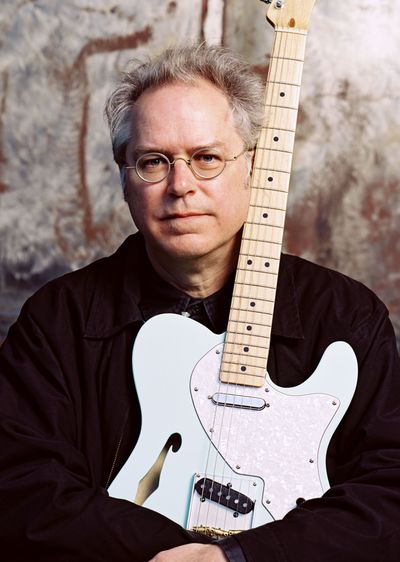Guitarist Frisell finds energy in music’s malleability
Musician’s work bears marks of jazz, rock, folk and beyond

There was something about the allure of an electric guitar that appealed to Bill Frisell before he’d ever picked one up or had even been in the same room with one. Growing up in the ’50s and ’60s, as American culture was being consumed by rock ’n’ roll and popular music was steeped in the sound of Fender guitars, Frisell knew he’d eventually become a musician.
“It’s all I’ve ever wanted to do,” he said during a recent phone interview. “Thinking back to way, way before I even owned a guitar, maybe even before I thought about playing one, I had a fascination with it. Even just the object itself was this cool-looking thing.”
Frisell’s obsession with music led him to pick up the clarinet in grade school, and he played it up until college, which is around the time that he got his first guitar.
“The clarinet was more of a serious thing, where my parents wanted me to practice every day,” he said. “But the guitar was something I was really drawn to on my own, and I loved it. Fender guitars and rock ’n’ roll – it’s all parallel to my own history somehow.”
The guitar and the clarinet might seem like they’re in different ballparks, but Frisell said he still applies the techniques of a woodwind instrument to his playing style. “Having that experience of playing a wind instrument, and the way it connects to your breathing and your body … I know that’s had a huge impact on the way I play,” he said. “Later on, being inspired so much by other instruments, listening to saxophone players and trumpet players, it gives me a little more connection to what that feels like.”
More than 30 years later, Frisell is the one of the premiere instrumental jazz guitarists, although lumping all of his music into the “jazz” category is a bit simplistic. His music flirts with folk, country, ambient rock and even pop – his 1992 album “Have a Little Faith” features deconstructed arrangements of Bob Dylan’s “Just Like a Woman” and Madonna’s “Live to Tell.” It’s not easily classifiable.
Frisell’s recorded output has been steady since his 1983 debut “In Line,” and he’s released at least one album per year since the mid-’90s (that’s not counting live recordings and greatest hits compilations). The energy in the recording studio is much different than it is onstage: There’s more time to work on a song over and over again until it clicks.
“I’m not sure if that’s a luxury or a curse,” he said. “When you’re doing a record, it’s so intense. You’re listening with such detail and you’re obsessing over it at that moment. … After recording is done, in a way I think of it almost as a blueprint or a map of the possibilities of what can happen next.”
A song isn’t really complete once it’s written and recorded, and Frisell says it can take on a whole new life when he’s playing live and trying to find a different approach to a song that’s been committed to tape.
“You’re trying to perfect it, but you’re also trying to discover something new in it,” he said. “Part of that is being able to not be afraid to make a mistake. But sometimes the greatest discoveries happen that way. … My hand goes to the wrong spot on the neck, and if I’m open and listening, maybe it’ll be terrible. But then also it could be, ‘Wow, I never thought of playing that in that moment,’ and it leads you to some good stuff.”